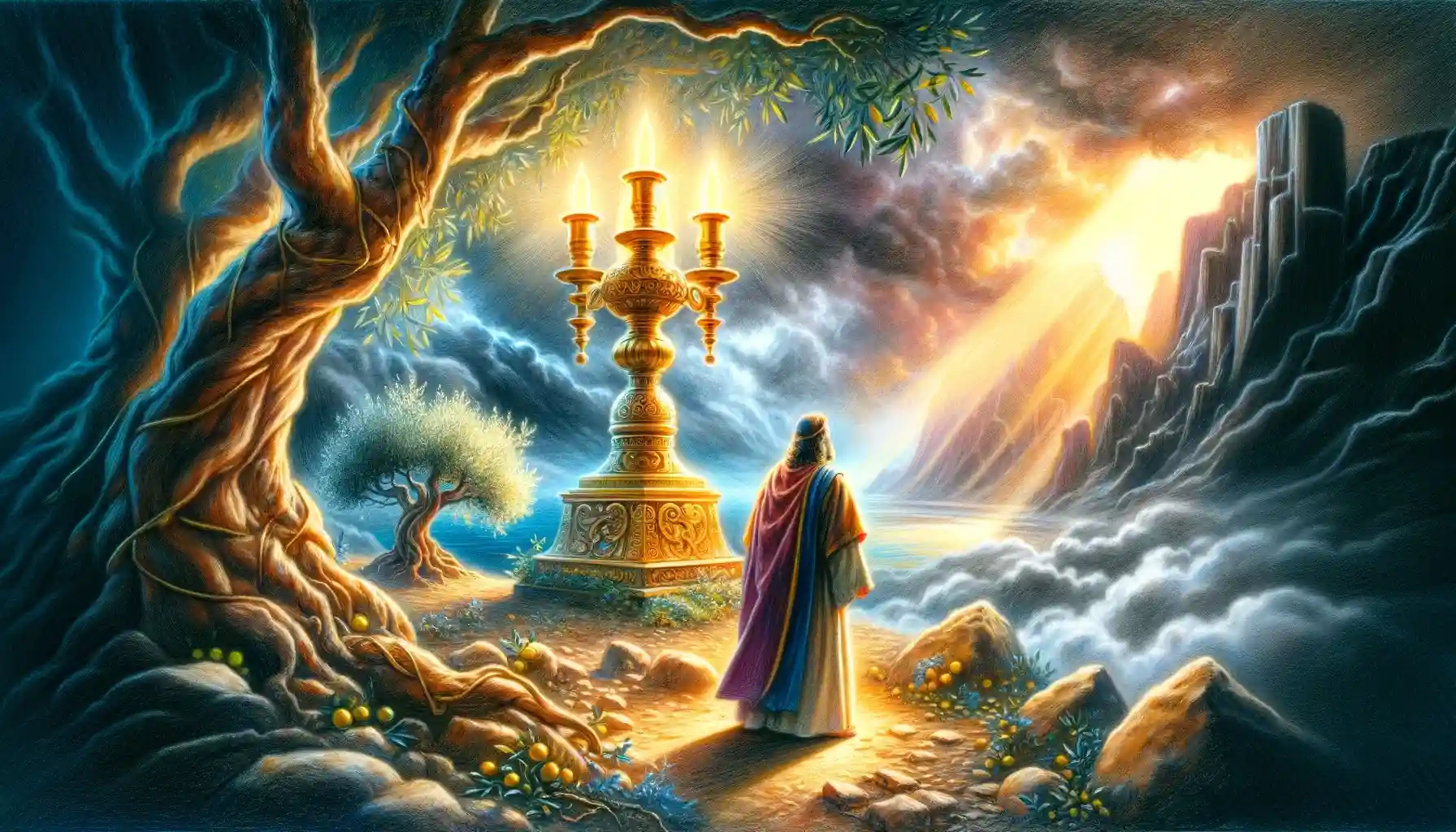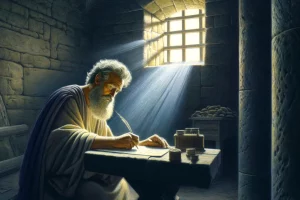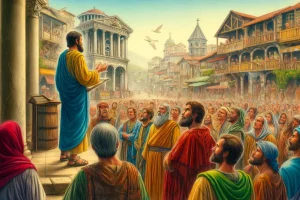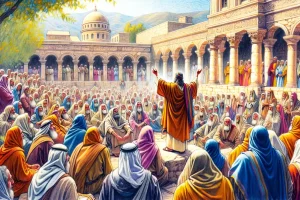
The Book of Zechariah
The Book of Zechariah is a significant text within the collection of the Twelve Minor Prophets in the Hebrew Bible. Here are some key facts about the Book of Zechariah:
- Authorship: Zechariah, a prophet whose name means “Yahweh remembers,” is traditionally credited as the author. He was likely a contemporary of the prophet Haggai and began his ministry around 520 BCE.
- Historical Context: Zechariah prophesied during a time when the Jewish community in Jerusalem was struggling with the reconstruction of the Temple after their return from Babylonian exile. His prophecies begin around the same time as Haggai’s and focus on encouraging the people to complete the Temple.
- Structure: The book is divided into two major sections:
- Chapters 1-8: Consist of a series of eight visions that Zechariah received, which are highly symbolic and encourage the people to continue the rebuilding efforts. These chapters also contain messages about God’s promises to restore Jerusalem and cleanse the people from sin.
- Chapters 9-14: Often referred to as Second Zechariah, these chapters are apocalyptic and messianic in nature, containing oracles about the coming of the Messiah and the future redemption of God’s people.
- Themes:
- Encouragement and Hope: Zechariah encourages the Jewish people to finish rebuilding the Temple and reassures them of God’s support.
- Divine Justice and Restoration: The prophet speaks of God’s plans to restore Jerusalem and bring justice, emphasizing that God has not forgotten His people.
- Messianic Expectations: Zechariah contains detailed prophecies about the Messiah, including the humble entry of the Messiah riding on a donkey (Zechariah 9:9) and the piercing of the Messiah (Zechariah 12:10).
- Key Verses:
- Zechariah 4:6: “Not by might, nor by power, but by my Spirit, says the LORD of hosts.”
- Zechariah 9:9: “Rejoice greatly, O daughter of Zion! Shout aloud, O daughter of Jerusalem! Behold, your king is coming to you; righteous and having salvation is he, humble and mounted on a donkey, on a colt, the foal of a donkey.”
- Literary Features: Zechariah is noted for its rich use of visions and symbolism. The imagery is complex and often requires interpretation but is deeply rooted in the experiences and hopes of the post-exilic community.
- Theological Significance: The book underscores the importance of covenant faithfulness and the role of the community in God’s redemptive plan. It also highlights the spiritual leadership necessary for the community’s success.
The Book of Zechariah is a profound and complex prophetic text within the Hebrew Bible, offering a rich tapestry of apocalyptic visions and messianic prophecies. Zechariah’s ministry, like that of his contemporary Haggai, focuses on encouraging the returned exiles in Jerusalem to rebuild the Temple and revitalizes their spiritual commitment. Here’s a detailed analysis of the Book of Zechariah, exploring its structure, themes, and theological insights.
1. Historical Context
Zechariah began his prophetic ministry around 520 BCE during the reign of Darius the Great of Persia. This was a critical period for the Jewish community in Jerusalem, struggling with the reconstruction of the Temple and their identity as a people after the Babylonian exile. Zechariah’s prophecies provided both encouragement and divine insight to a community uncertain of its future.
2. Structure
The book is generally divided into two main sections, each with distinct characteristics:
- Chapters 1-8: This section contains a series of eight night visions that Zechariah received, all rich in symbolic imagery and each providing a message of hope and encouragement. These visions are followed by narratives and discourses that deal with the community’s questions about fasting and religious practices.
- Chapters 9-14: Often referred to as Second Zechariah, these chapters shift towards apocalyptic and messianic prophecies. They include oracles about the coming of Zion’s king, the rejection of the shepherd, and detailed descriptions of a cosmic struggle leading to a final victory of God over evil.
3. Major Themes
- Divine Encouragement and Restoration: Central to Zechariah is the theme of encouragement—urging the Jewish community to complete the Temple and reassuring them of Yahweh’s presence and blessing. The visions often depict God’s active involvement in history, ensuring the protection and prosperity of His people.
- Messianic Prophecies: Zechariah contains significant messianic expectations, notably in Zechariah 9:9, which prophesies a king riding on a donkey, and Zechariah 12:10, which foretells the mourning for one who is pierced, prefiguring Christian interpretations of Jesus’ crucifixion.
- Universal Salvation: The book also emphasizes that salvation and restoration are not limited to Israel but extend to all nations, reflecting a universalist perspective.
4. Literary Features
Zechariah’s use of apocalyptic literature is notable, characterized by symbolic imagery and visions that convey deep theological truths. These literary elements serve to communicate both immediate encouragement and eschatological hope, requiring careful interpretation to fully grasp their meanings.
5. Theological Significance
- God’s Sovereignty: Zechariah reaffirms God’s ultimate control over history and His plan for the redemption of His people, emphasizing that human efforts are complemented by divine power.
- The Spirit Over Might: The famous pronouncement in Zechariah 4:6, “Not by might, nor by power, but by my Spirit,” highlights the role of God’s Spirit in accomplishing divine purposes, underscoring a reliance on spiritual rather than military strength.
6. Contemporary Relevance
Today, Zechariah continues to inspire with its themes of hope, the importance of spiritual vitality, and the anticipation of a fulfilled divine promise. Its messages encourage faithfulness and perseverance in spiritual endeavors, resonating with modern readers facing their own communal or personal challenges.
In summary, the Book of Zechariah offers a multifaceted perspective on prophetic visions, combining immediate historical concerns with long-term eschatological visions. It challenges readers to see beyond their current circumstances to the broader purposes of God, both for their community and for the world.
Tag:apocalyptic visions, cosmic struggle, Darius the Great, divine encouragement, divine judgment, divine sovereignty, Eschatological Hope, Hebrew Bible, Jerusalem, Jewish community, King on a donkey, messianic prophecies, minor prophets, night visions, Old Testament, pierced Messiah, post-exilic period, prophecy, Second Zechariah, spiritual leadership, spiritual renewal, symbolic imagery, Temple reconstruction, universal salvation, Zechariah



